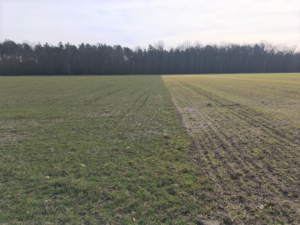
A huge proportion of solar photovoltaic (PV) arrays are under-performing financially and could easily be improved. Farms and estates should therefore consider getting them independently assessed.
According to independent power and energy consultancy Roadnight Taylor, there are many reasons why arrays might not be performing as well as they could, from physical faults to incorrect metering or tariff agreements.
“We have been carrying out a lot of solar health checks recently and have been shocked by the proportion that are generating less revenue or carrying more costs than they should,” says chief executive Hugh Taylor.
“We haven’t done a single review yet where we have not found some low-hanging fruit and earned our clients far quicker paybacks than they would normally seek.”
A typical payback period for fixing underperformance in existing PV schemes is one to three years, compared to six or more years for investment in new schemes. “Often, the company that installed the system originally is paid to come back and carry out an annual inspection,” explains Mr Taylor.
“But if they installed it incorrectly to start with, they are unlikely to have the expertise to fix it – and there is no incentive for them to highlight their mistakes. Landowners are paying installers to mark their own homework, again and again. An independent assessment of performance is therefore important.”
In one case, a client was paying over £1,000 for the installer to check their solar array each year, and upon independent inspection Roadnight Taylor discovered the scheme had been underperforming by thousands of pounds for each of the four years since its installation.
In other cases, schemes develop issues over time. Roadnight Taylor recently inspected a solar array and discovered it wasn’t working at all – something of which the client was completely unaware. In each instance it was simple, low cost and quick to rectify.
As well as physical faults, other reasons for financial underperformance include uncompetitive tariffs, inappropriate metering and monitoring, and unsuitable insurance.
“Often solar insurance will have been invalidated for one reason or another – or it could be inappropriately expensive. So it’s always worth having an independent expert check this at the same time,” says Mr Taylor.
In addition, some arrays will be subject to business rates, unbeknown to the landowner. “There are 20,000 rateable installations that the Valuation Office Agency hasn’t caught up with yet. This means there are a lot of solar schemes that are accruing a liability, which could add up to a hefty bill.”
However, there are ways to avoid or reduce business rates, so it’s worth acting now rather than waiting for the VOA to investigate, he adds.
To assist landowners, Roadnight Taylor has designed a Solar PV HealthCheck for existing ground-mounted and rooftop arrays, with an initial desktop study of records, data and agreements to flag up likely weaknesses. “We’ll only recommend a site visit if the HealthCheck identifies financially-significant issues and opportunities,” says Mr Taylor.
“Most problems with solar arrays are not difficult or expensive to fix. And with our recommendations to sustain the scheme’s health, landowners will have peace of mind that they have appropriate management systems in place.”
- The Solar PV Healthcheck costs from £350 + VAT. For more information contact Roadnight Taylor on 01993 830571




